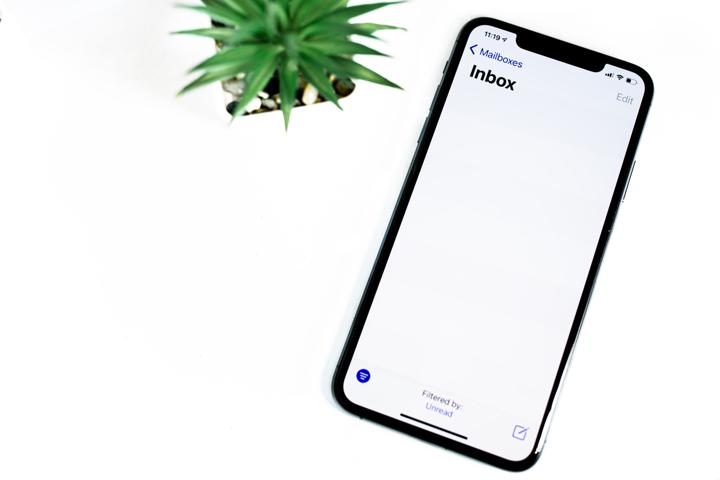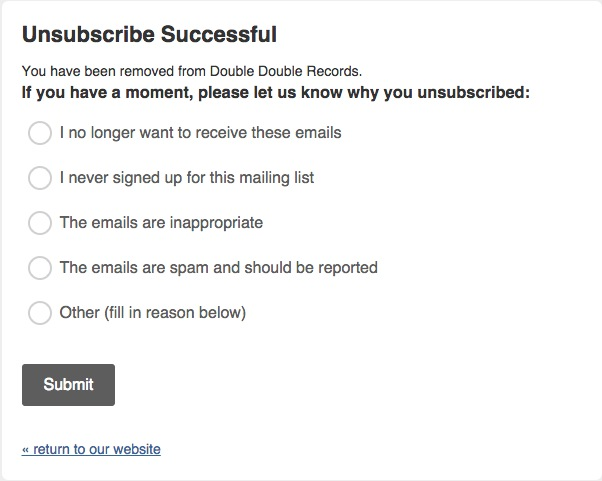Nobody will dispute that the more eyes that are on your email campaign, the more successful the campaign will likely be. That means, in order to keep growing as a business, you need to keep growing your email list.

The key to getting new subscribers to your email campaign is to build up a list of people who are genuinely interested in the content of your emails. You could have terrific email content with eye-catching subject lines, but if you're sending emails that aren't reaching potential customers, all that work might have been for naught. But how do you know you’re building an effective list? Pay attention to your unsubscribe rate.
In this article, we’re sharing:
- What an unsubscribe rate is
- Why your unsubscribe rate is important
- How to track it
- How to optimize to reduce your unsubscribe rate
Here we go.
What is an unsubscribe rate?
Put simply, an email unsubscribe rate is the number of people that take themselves off of a company’s list of subscribers divided by the number of people sent the email, multiplied by 100.

By unsubscribing from an email, these people opt to longer receive any communication or email efforts from the company that they unsubscribed from. People unsubscribe from an email list or newsletter for a variety of reasons. Maybe they’re not happy with the number of emails that they’ve been receiving. Or, perhaps they’ve moved away from the city where the company operates.
While some reasons for unsubscriptions are no fault of the company, it’s important to consider the average unsubscribe rate of your email lists. Usually, a high unsubscribe rate correlates to either the content of your emails, or the frequency with which you send them. It's important to make sure you're offering relevant content to subscribers.
Why does your unsubscribe rate matter?
When you’re targeting the proper audience for the products, services, or information that you provide, you’ll probably notice a low unsubscribe rate amongst all of your viewers. This is significant in that it means that your audience is either growing or staying consistent, rather than experiencing drop-offs.
Your unsubscribe rate also matters because it can be indicative of the relevancy of your emails. Generally, consumers unsubscribe from lists that either do not interest them, or are simply not relevant to themselves and the products that they are interested in. If you see that your email campaigns have a low unsubscribe rate, you’re likely targeting the right audience for the products or information within your email.
What is a good unsubscribe rate?
Typically, good unsubscribe rates are considered 1%. According to Campaign Monitor, the industry norm is around 2%, and the average is around 0.17%. However, anything under .5% is fantastic.
Zero would be ideal, but you know there are going to be some users who end up changing careers or not finding your content helpful. That’s okay, and it’s expected—you just don’t want a ton of unsubscribes to be your norm. That’s why tracking your unsubscribe rate and optimizing to reduce is important.
How do you track your unsubscribe rate?
Your unsubscribe rate can be found by totaling your number of unsubscribers, and then dividing that number by the number of emails that were successfully delivered.
Mailchimp provides information for you on both of those metrics. You can access that information by following these steps. Once you find that information, simply plug it into the formula, and you’ll see your campaign’s unsubscribe rate.

Mailchimp also offers an unsubscribe reason survey to get more insight.
Some email marketing software will also do this automatically for you on each of your email sends, so make sure to review that each time to know what’s normal for you.
How to optimize to reduce your unsubscribe rate
The best way to lower or maintain your unsubscribe rate is to make sure that your content is optimized to your target audience. The more that your products, services, or information interests the reader, the less likely they are to unsubscribe from your email list. Some ways to optimize your emails include:
1. Start with a great subject line
First impressions are everything. Make sure that you leave a positive impression on your subscribers by providing them with an eye-catching subject line that makes them want to click on the email and read more about what you have to offer. Higher open rates are a sign your subscribers are interested in reading your emails.
2. Personalize your email
Subscribers like when content looks as though it was prepared just for them. Common ways to personalize your emails for each of your readers include adding the viewer’s name to the email, or suggesting products that are similar to ones they’ve been interested in in the past.
Personalizing the content takes more effort, but it's worth it for more than just unsubscribes. Studies show that personalizing email copy can improve click-through rates by 14% and conversions by 10%.

3. Optimize the copy
Once a subscriber opens the email and begins consuming the information within it, make sure that it’s compelling and keeps them wanting more. With better content, you’ll produce more engagements for your email and more traffic to your website, as well. Good copywriting keeps your subscribers looking forward to the next email.
For more email marketing tips and information, check out this marketing webinar we did at Valve+Meter.
4. Keep testing
These are all great ways to improve your unsubscribe rate. But you’re not done after implementing these tips. The best way to optimize your email marketing to reduce your unsubscribe rate is to keep testing everything—and then keep making changes based on those results.
If you have a system of creating, testing, and optimizing in place, you can keep your unsubscribe rate low—and your other important email metrics high.
Monitor your unsubscribe rate
Now that you know what an unsubscribe rate is and why it’s important, you need to keep track of yours. Email marketing continues to be one of the most important marketing mediums and, according to industry benchmarks, that’s not going away any time soon. So stick to monitoring your unsubscribe rate and optimizing your email for better performance.
About the author
As the founder and CEO of Valve+Meter Performance Marketing, Marcia Barnes knows a thing or two about leading and serving. In addition to leading multiple marketing agencies, she has received notable recognition as president and CEO at Defender Direct. Over the course of your 14-year tenure with the company, it grew from $2MM in annual revenue to more than $400MM.
